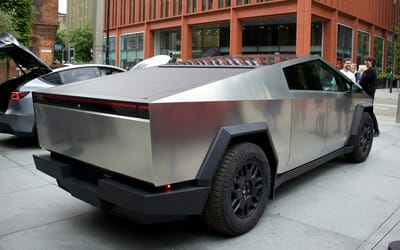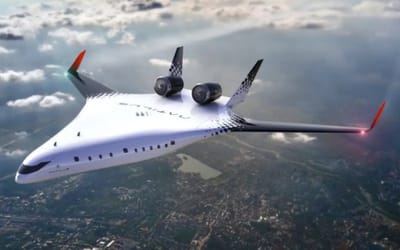Woman reveals how astronauts sleep in ISS under zero gravity
- Sunita L. Williams has explained how astronauts sleep in space
- Despite the strong circadian rhythm of Earth, they still have regular bedtimes
- She gives us a guided tour of her sleep station
Published on Feb 05, 2024 at 7:49 PM (UTC+4)
by Amelia Jean Hershman-Jones
Last updated on Feb 07, 2024 at 1:31 PM (UTC+4)
Edited by
Adam Gray
While spacewalks and research spring to mind – we often forget the day-to-day of astronauts aboard the International Space Station (ISS).
One American astronaut, Sunita L. Williams, has explained how astronauts sleep in space – and it might surprise you.
Despite the lack of natural daylight and strong circadian rhythm of the Earth, in space an astronaut goes to bed at a certain time and wakes eight hours later for the working ‘day’.
Space has no “up” or “down”, but it does have microgravity – meaning they sleep in any orientation rather than lying down.
Even sleeping upside down won’t make a difference, per Williams.
That’s part of the reason why astronauts come back from space as ‘different people’.
However, astronauts do have to attach themselves to something so they don’t float around and bump into equipment.
Space station crews usually sleep in sleeping bags located in sleep stations big enough for one person – although they do have a laptop, books, and some other home comforts in there, too.
Aboard ISS there are four sleep stations organized in a circle so the crew can sleep fairly close while maintaining privacy.
Some of the images used in this article are created using AI.
DISCOVER SBX CARS: The global premium car auction platform powered by Supercar Blondie

All Supercar Blondie contributors undergo editorial review and fact-checking to ensure accuracy and authority in automotive journalism. After gaining her BA Hons in French and English at the University of Nottingham, Amelia embarked on a vocational diploma from the National Council for the Training of Journalists (NCTJ). This led to numerous opportunities, from interning at Vogue to being on the small team that launched Women’s Health magazine in the UK, which was named the PPA Consumer magazine of the year for three years running. As Health, Beauty and Fitness editor, Amelia personally received a Johnson & Johnson Award and was shortlisted for both PPA and BSME titles. Since then, Amelia has created content for numerous titles and brands, including the Telegraph, 111 Skin, Waitrose, Red magazine, Stylist, and Elle, as well as being Head of Content at Vitality and Editor in Chief at INLondon magazine. “My superpower is translating technical jargon about the mechanical workings of a supercar into a relatable story you’ll want to share with your friends after you’ve read it.” After joining the SB Media family as a senior journalist in September of 2023, Amelia’s role has evolved to see her heading up the SEO output of the editorial team. From researching the most ‘Google-able’ key terms to producing evergreen content - it’s been a time of hard work, growth, and success for the editorial team and the Supercar Blondie website. “I like to think of myself as a ‘method journalist’. In other words: I live and breathe whatever I am writing about. When writing about fitness, I trained as a personal trainer, and as a beauty editor, I completed an ‘expert’ in scent diploma with the Fragrance Foundation. “During my tenure at Supercar Blondie, however, I did something I never thought possible: I passed my driving test at the age of 36. One day I’d love to train as a mechanic to better understand what happens under the hood, too. “My sweet spot is providing readers with a ‘takeaway’ (read: something new they didn’t know before) after reading every one of my stories. While I don’t claim to be an expert in the automotive world, I know the experts and bodies in the field to rely on to provide our readers with an informative and thought-provoking story every time they visit the site.”




